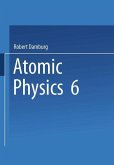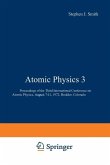This book aims to give a comprehensive view on the present status of a tremendously fast-developing field - the quantum dynamics of fragmenting many-particle Coulomb systems. In striking contrast to the profound theo retical knowledge, achieved from extremely precise experimental results on the static atomic and molecular structure, it was only three years ago when the three-body fundamental dynamical problem of breaking up the hydro gen atom by electron impact was claimed to be solved in a mathematically consistent way. Until now, more "complicated", though still fundamental scenarios, ad dressing the complete fragmentation of the "simplest" many-electron system, the helium atom, under the action of a time-dependent external force, have withstood any consistent theoretical description. Exceptions are the most "trivial" situations where the breakup is induced by the impact of a single real photon or of a virtual photon under a perturbation caused by fast, low charged particle impact. Similarly, the dissociation of the "simplest" molecu lar systems like Ht or HD+, fragmentating in collisions with slow electrons, or the H3 molecule breaking apart into two or three" pieces" as a result of a single laser-photon excitation, establish a major challenge for state-of-the-art theoretical approaches.
Dieser Download kann aus rechtlichen Gründen nur mit Rechnungsadresse in A, B, BG, CY, CZ, D, DK, EW, E, FIN, F, GR, HR, H, IRL, I, LT, L, LR, M, NL, PL, P, R, S, SLO, SK ausgeliefert werden.









